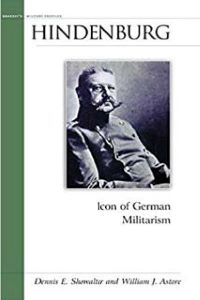- USAF Academy Department of History
Hindenburg: Icon of German Militarism
by Dennis Showalter and William J. Astore
With his victory over the Russian army at the battle of Tannenberg in August 1914, Paul von Hindenburg became a war hero. By 1916 he had parlayed an exaggerated reputation for decisive victory into near dictatorial powers. After Germany’s defeat at Verdun and War Minister Erich von Falkenhayn’s dismissal in late 1916, Hindenburg, along with his chief of staff Erich Ludendorff, took over strategic direction of the war. The eponymous Hindenburg Program attempted with some success to mobilize Germany’s economy for war. He also oversaw many of Germany’s most important wartime decisions, including the resumption of unrestricted submarine warfare, Bethmann Hollweg’s dismissal as chancellor, Russia’s defeat and negotiation of the Treaty of Brest-Litovsk, and the “Ludendorff Offensives” of 1918, which sought decisive victory on the Western Front but ended in Germany’s catastrophic defeat. After the war, Hindenburg played a crucial role in creating the Dolchstosslegende (the myth that the German Army had been “stabbed in the back” by a Jewish-Bolshevik conspiracy on the homefront), in leading Germany as president of the Weimar Republic, and, most tragically, in acquiescing to Adolf Hitler’s rise to power.

